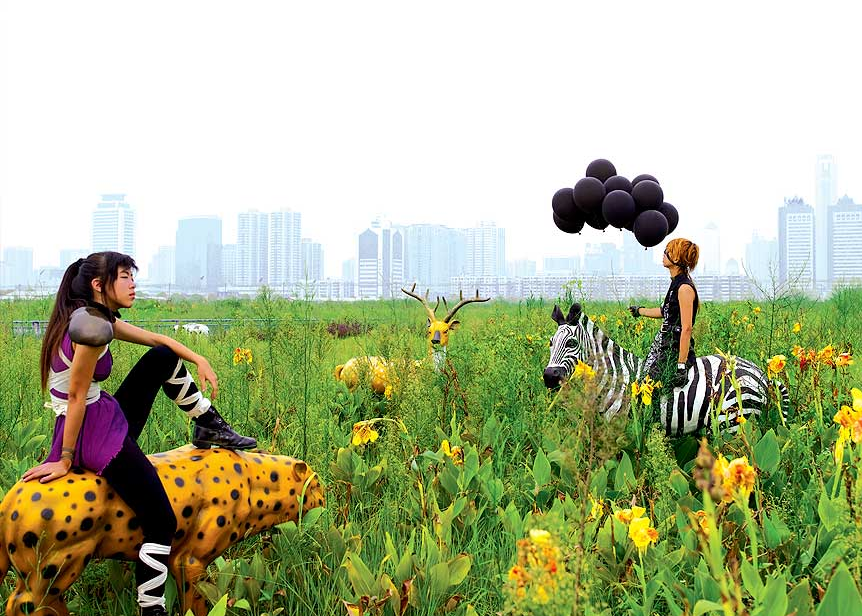
Cao Fei, A Mirage (COSPlayers Series), 2004 © Cao Fei
Courtesy the artist and Lombard-Freid Projects, New York
In a recent interview, Chinese multimedia artist Cao Fei reflects on life in Beijing, motherhood, censorship, and the trends that she has observed in the art created by new Chinese artists. According to Fei, younger Chinese artists are less interested in walking the political “red line” than their predecessors. “The younger artists would rather avoid politics,” she states. “For them, politics is just textbook history.”
- New forms of self-representation are being created, writes Johanna Fateman, by post-Internet artists whose works both mirror the tropes of female representation and also “morph and mutate” them, in a dialectical flux that moves between “critique and complicity.”
- In an era when some argue photos have lost their impact, Alfredo Jaar’s Shadows restores the “valuable currency of reflection” to the art world through the reframing of photojournalist Koen Wessing’s contact sheets from the 1978 Sandinista insurrection.
- An unsanctioned bust of Edward Snowden briefly filled an empty plinth in a Brooklyn park’s war memorial Monday. Its makers said the NSA whisteblower deserved a place among those who risked “their safety in the fight against modern-day tyrannies.” Hours after the guerrilla monument to Edward Snowden was removed, he returned in the form of a hologram. An artists’ group dubbed The Illuminator projected Snowden’s image onto a cloud of smoke above an empty plinth.
- A half century after the birth of Pop art, “its map is being redrawn with a vengeance,” writes Randy Kennedy of International Pop, the Walker exhibition that highlights artists around the globe who engaged in questioning a changing world in the 1960s.
- Throughout April, Temporary Art Review looks at ideas around the Open Engagement conference, focusing on emergent forms of “critical writing around socially engaged practices,” emphasizing “complex, embedded and decentered dialogues around the work.”
- With Anicka Yi’s new show as a touchstone, Wendy Vogel explores the use of scent in art. Citing Clement Greenberg’s obsession with the ocular, Yi’s work uses bacteria synthesized from women, an act that is both feminist and a re-engagement of art with the body.
Follow Art News From Elsewhere on the Walker Art Center homepage or via @walkermag, the Walker’s editorial-focused Twitter feed.



